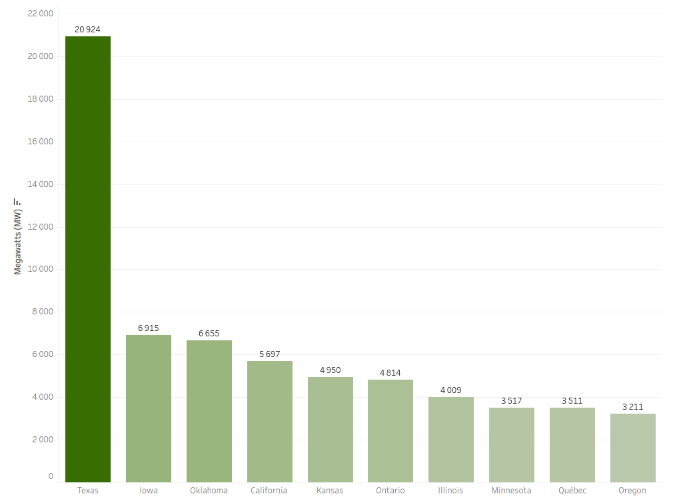
Common obstacle to adoption of wind power is challenge to grid reliability
Ontario and Quebec ranked in the top 10 jurisdictions in North America in terms their total amount of installed wind capacity in 2017, according to the National Energy Board.

Over the past 10 years, the wind capacities of Ontario and Quebec have both grown more than 10 fold. With 4,814 megawatts (MW) and 3,511 MW of installed capacity, respectively, Ontario and Quebec accounted for 68.6% of Canada’s 12,134 MW of total wind capacity.
In the United States (U.S.), Texas and Iowa lead the deployment of wind. With 20,924 MW, Texas holds 21.0% of North America’s wind capacity. Iowa has the 2nd largest capacity, at 6,915 MW.
The Mexican state of Oaxaca housed 2,346 MW, or 73.5% of that country’s wind capacity in 2017, but did not place in the top 10 jurisdictions.
One common obstacle to the adoption of wind power is the challenge to grid reliability caused by the intermittent nature of renewable electricity generation.
A key factor behind the success of wind development in these jurisdictions is the availability of reliable backup electricity sources, either locally, or accessible through trade with other regions.
Hydro facilities in Ontario and Quebec, and natural gas and coal facilities in Texas and Iowa produce a large, steady, and controllable amount of electricity. This provides the flexibility that is needed to balance wind’s intermittent nature.
The variable portions of daily demand can either be supplied by other local generation, both renewable and non-renewable, or with electricity imported from other regions.
Ontario, Quebec, and Iowa actively trade electricity, which allows them to buy and sell surplus electricity, and increase their overall grid reliability.


Be the first to comment